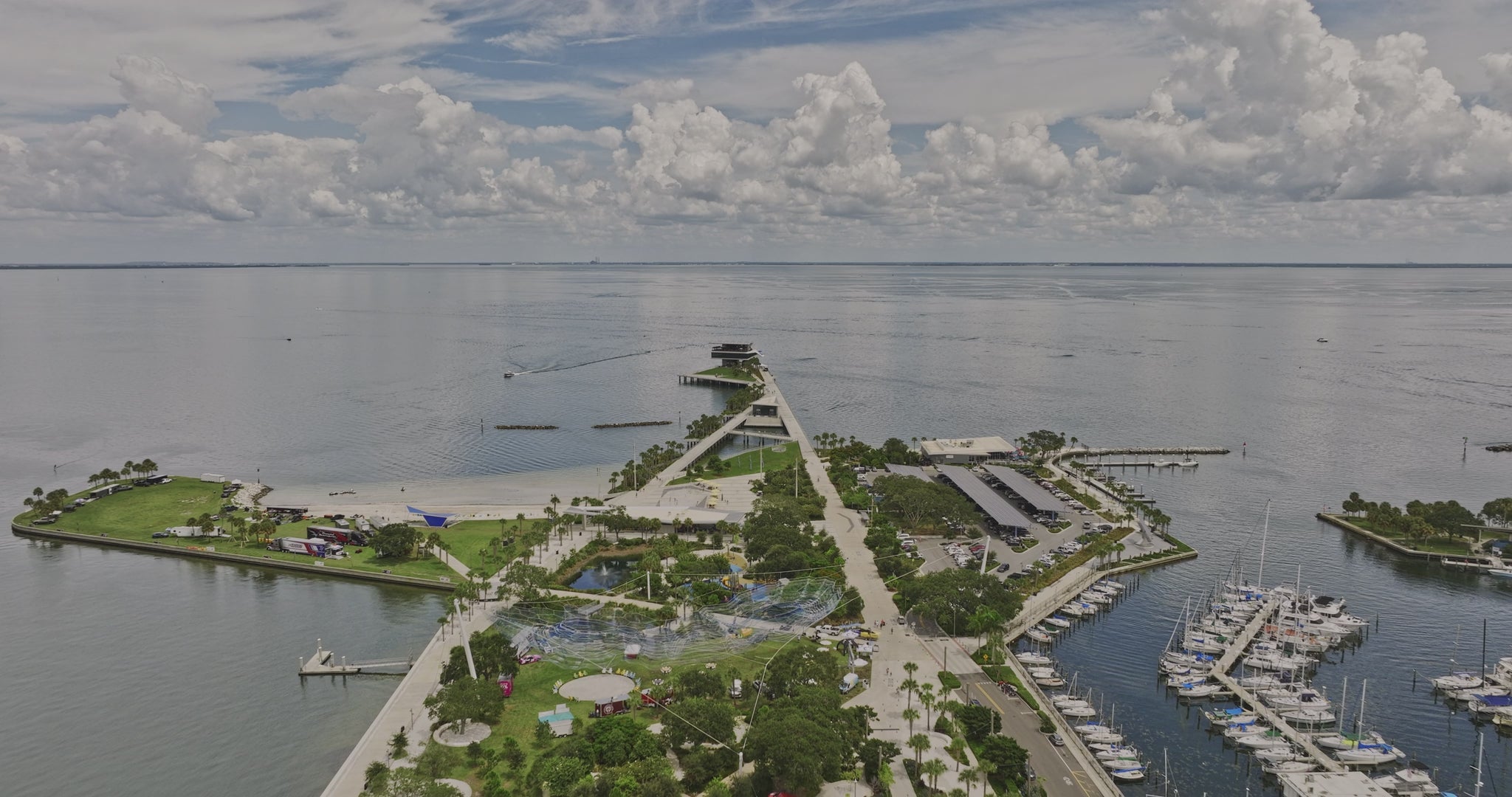Skin cancer is the most common type of cancer worldwide, with UV exposure being the leading cause of most cases. In addition, prolonged sun exposure contributes significantly to visible skin aging, leading to wrinkles, fine lines, and discoloration. If you work outdoors, travel for long hours, or spend extended time on the water, your risk of UV damage is significantly higher. But don’t worry—staying safe doesn’t mean avoiding the sun altogether. With the right precautions, you can protect your skin's health and appearance while continuing to do the work you love.
Jobs with the Highest Risk of Skin Cancer
Not all jobs come with the same level of UV exposure. If your work involves long hours outdoors, exposure to reflective surfaces like water, concrete, or metal, or being at high altitudes, your skin absorbs more UV radiation than you might realize. Over time, this exposure accumulates, raising the risk of skin cancer and premature aging. Even jobs that involve working near windows, driving, or flying for extended periods can result in significant UV exposure. Understanding these risks is the first step toward better protection.
1. Firefighters
Firefighters deal with more than just flames. Every emergency call exposes them to harmful chemicals from smoke and soot, which can cling to the skin and increase cancer risk. On top of that, outdoor rescues and long shifts in direct sunlight mean continuous UV exposure. Unlike many outdoor workers, firefighters don’t always have the luxury of applying sunscreen before heading out on a call, making their risk of skin damage even greater.
Prevention Tips:
- Wear UPF-rated base layers under protective gear.
- When possible, apply SPF 30+ sunscreen before heading out on a call.
- Wash off soot and chemicals as soon as possible after exposure.
- Take shade breaks whenever possible to limit cumulative UV exposure.
- Schedule routine skin screenings—early detection is key.
2. Construction Workers, Roofers & Solar Panel Installers
Working on rooftops, roads, or open job sites means constant exposure to the sun, often with little to no shade available. Construction workers and roofers are especially at risk because UV rays intensify when reflected off surfaces like metal, concrete, and glass. Without proper protection, prolonged sun exposure can cause severe sunburns, premature aging, and an increased risk of skin cancer over time.
Prevention Tips:
- Wear lightweight UPF clothing, wide-brimmed hats, and sunglasses.
- Apply SPF 50 sunscreen at least 15 minutes before heading outside and reapply every two hours.
- Take breaks in the shade whenever possible.
- Use UV-protective gloves and apply SPF lip balm—your hands and lips are often forgotten!
3. Farmers, Landscapers, & Agricultural Workers
Spending long hours outdoors is part of the job for farmers, agricultural workers, and landscapers, but it also means frequent and intense sun exposure. Unlike other workers who may have the opportunity to take breaks indoors, these professionals often spend sunrise to sunset in the fields or gardens, accumulating high levels of UV exposure day after day, year after year. Without consistent protection, they face a much higher risk of skin cancer, heat-related illnesses, and premature aging.
Prevention Tips:
- Wear long-sleeved UPF shirts and a wide-brimmed hat.
- Apply broad spectrum SPF 50 sunscreen at least 15 minutes before heading outside and reapply throughout the day, especially when sweating.
- Wear UV-protective eyewear to prevent damage to the eyes and surrounding skin.
- Create shade structures in work areas to reduce exposure.
4. Pilots & Flight Crew
At high altitudes, UV radiation is significantly stronger, yet many pilots and flight attendants are unaware of the risks. The airplane’s windshield and windows don’t fully block UVA rays, meaning that prolonged exposure in the cockpit can result in cumulative sun damage. Studies have shown that pilots and flight crew members have twice the risk of melanoma compared to the general population, making sun protection an essential but often overlooked precaution.
Prevention Tips:
- Apply broad-spectrum sunscreen at least 15 minutes before exposure, even inside the cockpit.
- Wear UV-protective apparel and polarized sunglasses.
- Use fingerless UV-protective gloves to protect hands while flying.
- Keep an eye on any new moles or skin changes and get regular skin checkups.
5. Lifeguards
Few professions experience as much direct sun exposure as lifeguards and water sports instructors. The combination of sunlight, sand, and water reflections doubles UV exposure, making their risk of sunburn and skin cancer exceptionally high. Without regular sunscreen application and UV-protective clothing, these professionals may suffer frequent sunburns, premature wrinkles, and even long-term skin damage that increases their risk of developing skin cancer.
Prevention Tips:
- Apply water-resistant SPF 50+ sunscreen at least 15 minutes before exposure and reapply every two hours (or after swimming).
- Wear UPF swim shirts, rash guards, hats, and sunglasses.
- Take breaks in shaded areas when possible.
- Rotate shifts to avoid being in the sun for too long.
- Stay hydrated—it helps your skin recover from sun exposure.
6. Outdoor Sports Coaches & Park Rangers
Spending hours outdoors, especially during peak sun hours, means constant exposure to UV rays. Whether coaching or refereeing a sports game, guiding a group through a national park, or maintaining trails, these roles demand extensive time under the sun. Without proper protection, frequent exposure can lead to sunburn, premature aging, and an increased risk of skin cancer over time. Park rangers often work in remote locations with little access to shade, while sports coaches may spend hours on open fields, making sun protection a top priority.
Prevention Tips:
- Wear breathable UPF clothing and a wide-brimmed hat.
- Apply SPF 50 sunscreen on all exposed areas and reapply every two hours.
- Use portable shade options, like umbrellas or pop-up tents, for breaks.
7. Fishermen & Boating Professionals
Just like lifeguards, fishermen and boating professionals face continuous UV exposure from both direct sunlight and reflections off the water, significantly increasing their risk of sunburn, premature aging, and skin cancer. Being on the water for extended periods means they often have limited access to shade, making it even more difficult to avoid sun damage. Additionally, wind and water can wear away sunscreen faster, leaving their skin vulnerable if not regularly reapplied. Without proper protection, prolonged exposure can lead to long-term skin damage and an increased risk of melanoma.
Prevention Tips:
- Wear long-sleeved UPF shirts and a wide-brimmed hat.
- Apply water-resistant, broad-spectrum SPF 50 sunscreen on the face, neck, and hands at least 15 minutes before heading outside, and reapply often.
- Set up UVE-rated canopies or umbrellas for shade when possible.
8. Truck Drivers & Delivery Workers
Truck drivers and delivery workers might not work outdoors, but they still experience significant UV exposure, especially on the left side of their face and arms due to prolonged sun exposure through vehicle windows. While some modern vehicles are equipped with UV-filtering glass, many are not, allowing harmful UVA rays to penetrate and contribute to long-term skin damage. Over time, this repeated exposure can lead to sunspots, wrinkles, premature aging, and an increased risk of skin cancer. Without proper sun protection, even those who spend most of their workday inside a vehicle are at risk of cumulative UV damage.
Prevention Tips:
- Apply SPF 30+ sunscreen before driving, and reapply if you’re driving long hours.
- Wear UV-protective gloves or sleeves made from UPF-rated fabric.
- Install UV-blocking window film to reduce sun exposure.
- Wear long-sleeved UPF shirts for added protection.
How to Reduce Skin Cancer Risk in High-Risk Jobs
Protecting your skin at work doesn’t have to be complicated. Simple daily habits can go a long way in reducing your risk. Here’s how to stay safe while keeping up with your routine:
Check the UV Index
Knowing the UV index before heading outside helps you plan better protection for high-exposure days.
Wear UPF Clothing
UPF 50+ clothing gives you built-in sun protection without needing reapplication. Look for lightweight, breathable materials that are comfortable for all day wear.
Apply Sunscreen Daily
Use broad-spectrum SPF 30+ sunscreen at least 15 minutes before heading outside and reapply every two hours. Water-resistant formulas work best for active outdoor jobs.
Use Sun-Protective Accessories
Hats, polarized sunglasses, UV-protective gloves or sleeves, and SPF lip balm help protect often-overlooked areas.
Create Shade
Use UVE-rated portable shade structures, pop-up tents, or vehicle coverage to limit direct sun exposure.
Check Your Skin Regularly
Watch for new moles, spots, or changes and schedule annual dermatology exams. Early detection can save lives.
Promote Sun Safety at Work
Make UV protection part of your daily routine and encourage coworkers to do the same.
The Bottom Line
If your job keeps you outside or exposed to UV rays for hours at a time, skin cancer is a real risk—but the good news is that it’s preventable. Whether you work in construction, firefighting, aviation, or delivery driving, taking simple sun safety steps can make all the difference.
Make sun protection a habit, and keep your skin healthy and protected for years to come.
Live well under the sun!
Content Disclaimer: This website offers general information about health and related subjects. All content and media on the Essuntials™ website are published online for informational and educational purposes only. We do not claim ownership over any 3rd-party content used, which belongs to its respective owners. It is not a substitute for professional medical advice and should not be relied on as health or personal advice. For any medical concerns, please seek professional medical advice.




